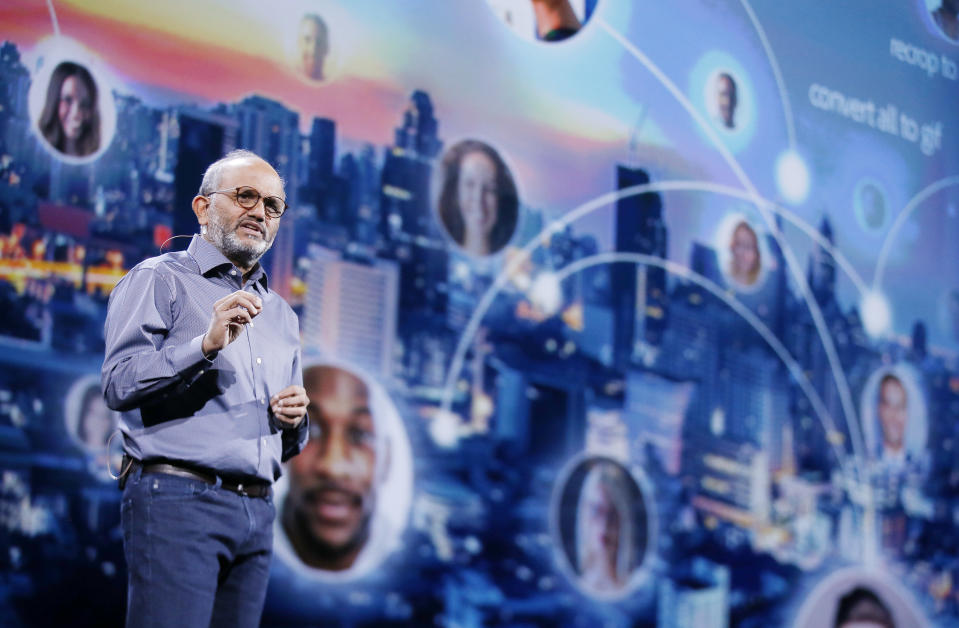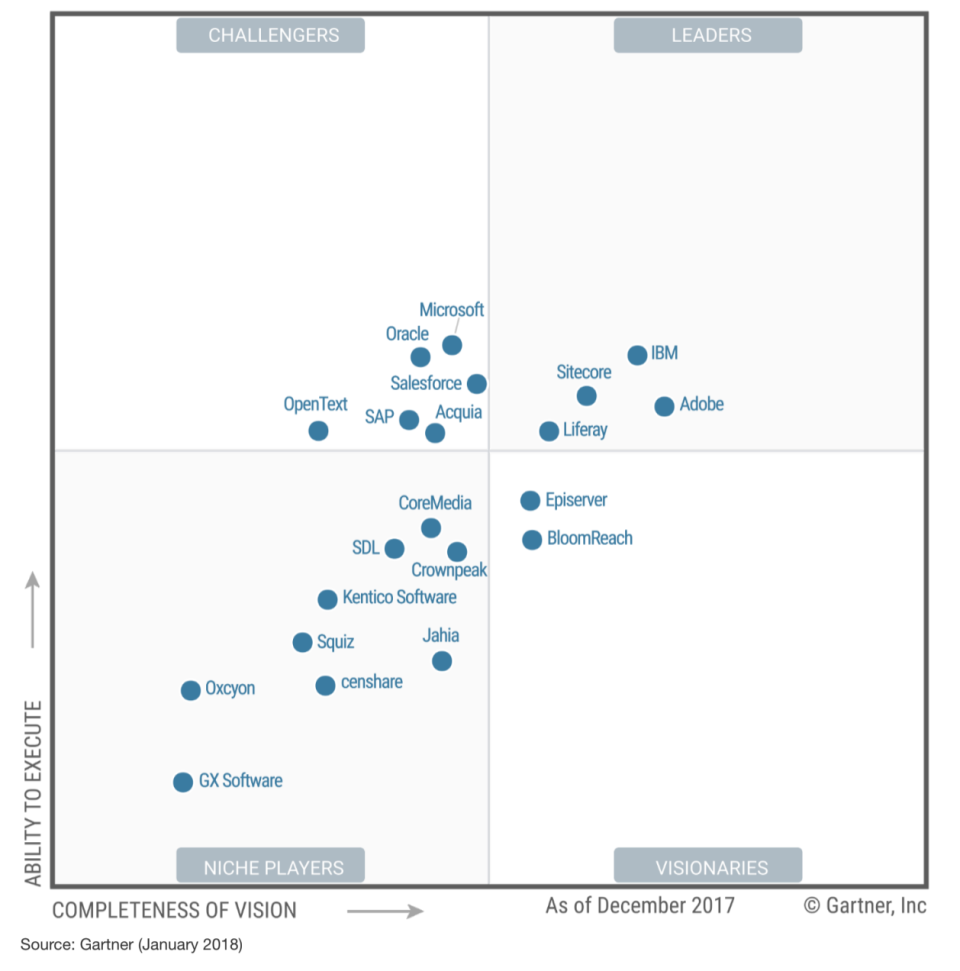Forget Photoshop, Adobe's fastest-growing business is marketing

Adobe (ADBE) cemented its name years ago as the force behind the ubiquitous Portable Document Format (PDF) and the popular photo editing software Photoshop, but its most promising business now is a suite of marketing and advertising tools helping businesses make sense of and use their data to reach customers.
Since Adobe officially rolled out its suite of cloud-based marketing tools 12 months ago, its Experience Cloud business has been booming. On Monday, the company announced it was bringing its marketing tools to China in a partnership with Microsoft (MSFT). That comes on the heels of strong earnings results for the unit. During Adobe’s fiscal first quarter 2018, the Experience Cloud, or Digital Experience, segment reported $554 million in revenue. And the company projects a 15% year-over-year growth for fiscal second quarter, driven by thousands of business clients, such as Ford (F), T. Rowe Price (TROW) and the NFL.
According to research firm Gartner, Digital Experience has made Adobe one of the leaders in a crowded market that includes IBM (IBM), Oracle (ORCL), Salesforce (CRM), and SAP (SAP). So, perhaps it’s little surprise Wall Street is loving the stock right now, which has climbed more than 75% over the past year alone.

“What frustrates marketers right now is they spend 75% of their meetings trying to reconcile the different data that they get from their different systems,” explained Brad Rencher, Adobe’s executive vice president and general manager of Experience Cloud. “‘So what does your data say? Well, my data says this,’ and you spend your time arguing about data versus focusing on your customer. So the way that we’re building these things is to build a tightly integrated system.”
Understanding how exactly Experience Cloud works, however, isn’t exactly an easy task, unless you’re a marketer who lives and breathes marketing-lingo like “lookalike audiences” — a technique that involves marketers finding new groups of customers that are similar to their current customers — or “suppression,” which removes specific subgroups of customers from a marketing campaign audience based on criteria.
Think of Adobe’s Experience Cloud business as a comprehensive collection of marketing and advertising tools that help companies store, analyze, and effectively use data to interact with customers in different ways. Princess Cruises, for instance, uses Adobe Audience Manager to store and analyze anonymous user data in the cloud. From that data, Princess Cruises uses Audience Manager to figure out how to target and advertise to different types of customers — repeat customers versus newbies — and how frequently. If a repeat customer has just recently booked a cruise, Audience Manager’s sophisticated suppression features let Princess Cruises easily figure out which ads to serve. Not only does it reduce the chances of annoying customers with ads they don’t want to see, it also makes marketing campaigns more efficient. According to Princess Cruises, it helped them cut down on marketing campaign expenses by roughly 20%.
Moving forward, Rencher says Adobe’s array of artificial intelligence technology, called “Sensei,” will play an even more important role in how marketing (and in turn, the Digital Experience business) evolves. Sensei is already smart enough to tell marketers which platforms to spend their ad dollars on — display ads versus search ads and eventually TV ads — and how much in revenue those ads are expected to generate. But he also sees opportunities in retail, as retailers with a brick-and-mortar and online presence blur the line between the physical and virtual.
Home Depot, for instance, used Experience Cloud to redesign its mobile app so that the retailer can easily customize its promotions depending on where their customers are located. So San Francisco residents will see different offers than those in Pittsburgh. Shoppers, meanwhile, can check their phones to see what’s in-stock, where, and how many of those items are actually available to buy in a specific store. And once customers are in a store, they can also use the app to help them quickly navigate an aisle to find the item they’re searching for.
But Adobe wants to take that even further. This January, the company previewed a project in its research labs that shows foot traffic inside a store in real-time. Eventually, a retailer will be able to categorize shoppers in different sub-groups based on factors like their shopping preferences and last visit date so they can send those shoppers personalized offers in that retailer’s app. Customers will ostensibly be able to save money on items they’re buying during their shopping trip, and retailers are that much more likely to get a customer to spend in their stores.
“There’s a lot of work we’re doing with Adobe Experience Manager and the in-store experience that I think will be exciting for marketers,” said Rencher.
—
JP Mangalindan is the Chief Tech Correspondent for Yahoo Finance covering the intersection of tech and business. Email story tips and musings to jpm@oath.com. Follow him on Twitter or Facebook.
More from JP

 Yahoo Finance
Yahoo Finance 
